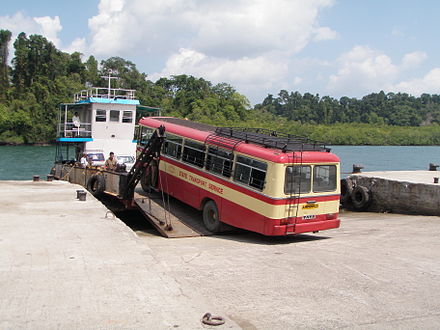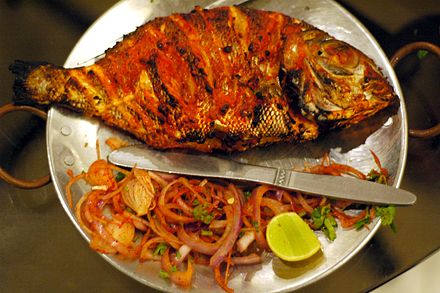Andaman and Nicobar Islands - union territory of India
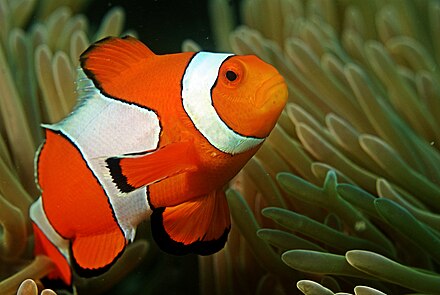
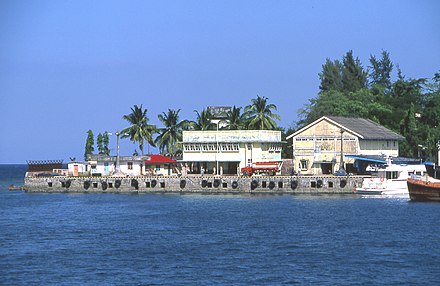
The Andaman and Nicobar Islands are a group of nearly 600 islands in the Bay of Bengal. Although part of India politically, they are closer to Indonesia and Myanmar than to the Indian mainland. They were just north of the epicentre of the earthquake in 2004 and were the site of dozens of aftershocks. The Nicobars were badly hit by the resulting tsunami, while the Andamans escaped with a few bruises.
Districts
There are three districts of the Andaman and Nicobar Islands. {{Regionlist | regionmap=Andaman and Nicobar Islands Wikivoyage map.png | regionInteractiveMap=map1
| region1name=North and Middle Andaman | region1color= | region1description=
| region2name=South Andaman | region2color= | region2description=
| region3name=Nicobar Islands | region3color= | region3description= }}
Cities
-
Port Blair 📍 — the laid-back capital of the archipelago and the only entry and exit point. Spend a day or two here walking around and enjoying fresh seafood and seeing a couple of the nearby sites like Ross Island, Viper Island & Bambooflat Island leading to Mount Harriet.
-
Diglipur 📍 — the largest town in the far north of the archipelago, it is a base for trips to the nearby Smith and Ross Islands.
-
Mayabunder 📍 — headquarters of North and Middle Andaman district, well connected to Port Blair via 240 km of Andaman Trunk Road (ATR). The distance is 136 km by ferry.
-
Rangat 📍 — It is around 210 km from Port Blair, connected by boat and Andaman Trunk Road.
-
Wandoor 📍 — a relaxed destination, but known more as the gateway to the Mahatma Gandhi Marine National Park
Other destinations
Islands
In 2018, many islands were officially renamed. The new names have not been widely adopted, but are listed below in brackets.
- Baratang Island 📍 — mud volcano, limestone caves and mangrove creeks in backwaters
- Barren Island 📍 — the island with the only active volcano in the whole of India. It is a restricted area within the Andaman Islands.
- Cinque Islands 📍
- Havelock Island (Swaraj Dweep) 📍 — the most visited of the islands, with the most (although still limited) infrastructure. Famous for its beautiful beaches, especially Radhanagar, Elephant Beach and Kalapatthar, and great for snorkelling, scuba diving, jet skiing, parasailing, kayaking, etc.
- Jarwa Reserve 📍
- Little Andaman 📍 — badly damaged from the 2004 tsunami, the island has recovered but is still among the less visited.
- Long Island 📍 — great if you're looking for Robinson Crusoe-style camping; no facilities, so you must bring all of your own gear and food – except that camping is illegal on public land and on beaches.
- Narcondam Island 📍 — a volcanic island that is home to the narcondam hornbill. Normally restricted for tourists by the Indian Coast Guard.
- Neil Island (Shaheed Dweep) 📍 — A small, beautiful island with amazing beaches like Bharatpur Beach, Laxmanpur Beach and Sitapur Beach and a natural bridge. Snorkelling, jet skiing, scuba diving, glass-bottom boat rides, etc.
- Ross Island (Netaji Subhas Chandra Bose Island) 📍 — the former headquarters of the Indian Penal Settlement
- Rutland Island 📍 — beautiful mangrove forest and coral reefs welcome you to this little visited and pristine island
- Smith and Ross Islands 📍
National parks
-
Campbell Bay National Park 📍 — forms part of the Great Nicobar Biosphere Reserve
-
Galathea National Park 📍 — part of the Great Nicobar Biosphere Reserve with rare species of plants and animals
-
Mahatma Gandhi Marine National Park 📍 — a national park of India in Wandoor on the Andaman Islands
-
Middle Button Island National Park 📍 — spotted deer can be found here
-
Mount Harriet National Park 📍 (Mount Manipur National Park) — named after Harriet Tytler who did early work documenting the monuments of Delhi
-
North Button Island National Park 📍 — home of the dugong, dolphin, water monitor and other animals
-
Rani Jhansi Marine National Park 📍 — a national park known for its coral reefs and marine life
-
Saddle Peak National Park 📍 — surrounded by tropical vegetation and forest, many species can be found here
-
South Button Island National Park 📍 — shallow water coral reefs popular for scuba diving
Understand

1,400 km from mainland India and 1,000 km from Thailand, the Andaman and Nicobar Islands are one of the most remote spots on the planet. The original inhabitants are various aboriginal tribes who exist more or less out of the mainstream. There are some tribes, most notably the Sentinelese, who have had almost no contact with the rest of the world. Of nearly 600 islands, only 9 are open to foreign tourists, and all of these are in the Andamans.
The islands exist in India's popular consciousness mainly because they were used as a penal colony during British rule to imprison rebels and freedom fighters, in addition to hardened criminals. The majority of people living on the islands are descendants of migrants from the mainland. Some of them descended from the prisoners.
During World War II, the Andamans were the only part of India that was, briefly, occupied by the Japanese. While notionally handed over to Subhash Chandra Bose's 'Free India", in practice the Japanese held the reins of power. The territory was run brutally — suspected resistance members were tortured and executed, and when food started to run out towards the end of the war, people were deported to uninhabited islands to fend for themselves.
Climate
Mid-January to mid-May has the best weather, and often the best diving conditions. The days are mostly sunny at this time of year, and the sea is sometimes flat enough to reflect the clouds. The monsoon usually hits around late May and lasts until the end of July. This is probably the worst time to visit the islands as there are strong winds, frequent rain and low visibility underwater. From August to November there are some occasional showers and slightly rougher seas but diving can still be great during this period of the year. The weather often takes a turn for the worse from the month of December to early January.
Geography
The Andaman and Nicobar Islands stretch out almost 500 km in length, with the Andamans in the north and the Nicobars in the south. The main island, aptly known as Great Andaman, is divided into three parts: North Andaman, Middle Andaman and South Andaman. The capital Port Blair is on South Andaman.
Talk
The main spoken languages are Hindi, Tamil and Bengali. Telugu and English are widely understood by the inhabitants of the islands that are open to tourism.
Foreigners can hire a guide to communicate with local people. Most of the guides work as volunteers and have been serving tourists for many years.
Get in
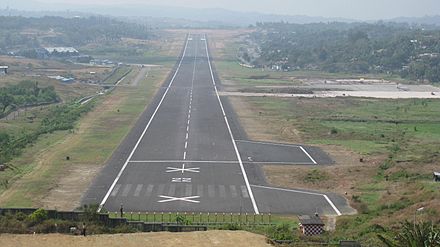 Non-Indians need a Restricted Area Permit to visit the islands, but these are now issued on arrival at the Port Blair airport. If you plan to arrive by sea, you'll need to arrange your permit before arrival, either in Chennai or when applying for your Indian visa. Visitors usually receive a 30-day permit, although some travellers arriving without a confirmed flight back have only received a 15-day permit. Ask for 30 days on your application; if you write in your return flight date, your permit will be issued to end on that date, which will cause unnecessary pain if you choose to extend your stay or, worse yet, get unexpectedly delayed by weather.
Non-Indians need a Restricted Area Permit to visit the islands, but these are now issued on arrival at the Port Blair airport. If you plan to arrive by sea, you'll need to arrange your permit before arrival, either in Chennai or when applying for your Indian visa. Visitors usually receive a 30-day permit, although some travellers arriving without a confirmed flight back have only received a 15-day permit. Ask for 30 days on your application; if you write in your return flight date, your permit will be issued to end on that date, which will cause unnecessary pain if you choose to extend your stay or, worse yet, get unexpectedly delayed by weather.
Permits can be extended by 15 days in Port Blair, for a maximum single stay of 45 days, although this extension is granted only in, to quote the local police guidelines, "deserving cases". You must then leave the islands and can return after 72 hours. The permit is checked when arriving at most islands, checking into hotels and booking ferries, and must be surrendered when you leave the islands, so don't lose it.
The permit allows overnight stays in the following locations: South Andaman Island, Middle Andaman Island and Little Andaman Island (except tribal reserves), Neil Island, Havelock Island, Long Island, Diglipur, Baratang, North Passage and islands in the Mahatma Gandhi Marine National Park (excluding Boat Hobday Island, Twin Island, Tarmugli Island, Malay Island and Pluto Island). Overnight stays in the park are with permission only.
The permit allows for day-trips to: South Cinque Island, Ross Island, Narcondam Island, Interview Island, Brother Island, Sister Island and Barren Island which can be visited on board vessels only with landing possible.
Indian nationals do not require a permit to visit the Andamans. However, permits are required to visit the Nicobar Islands and other tribal areas, which are rarely given. Application on an official form should be addressed to the Deputy Commissioner, South Andaman District, Port Blair.
By plane
The primary way to reach the Andaman and Nicobar Islands by air is from the Indian mainland to Port Blair. There are talks of opening up flights from Bangkok, which could drastically change the situation in the islands, but as of 2022 these remain just plans. Flights can fill up in peak season and immigration doesn't look kindly on people arriving without confirmed flights back, so book a return ticket and change the flight date if you decide to stay longer.
The main airport of the islands, Veer Savarkar International Airport (IATA: IXZ) in Port Blair, is probably one of the most quaint and idyllic airports in India. There is a scenic view point where the whole airport can be seen. There are no night flights as the airport is handed over to the Indian Air Force after 15:00. As of 2019, it has only flights from elsewhere in India.
By boat
It's possible to take a ship from Kolkata (c. 60 hr), Chennai or Visakhapatnam (almost 4 days) to Port Blair. It is less expensive at only ₹1961 (as of November 2011). Facilities are basic, though and many prefer to sleep on the deck rather than in the cramped bunks. The ferries can take up to five days to arrive depending on weather and various other variables. This can be quite frustrating for many. The Bay of Bengal is not calm, and those who get seasickness easily should consider flying, instead.
Get around
Between islands
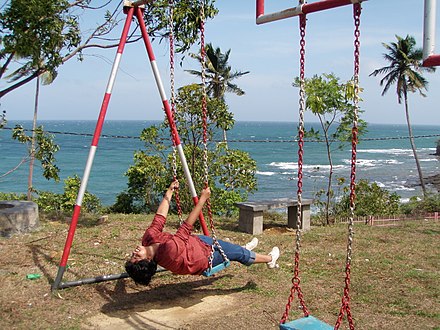
All passenger transport in the islands is handled by the government-run Directorate of Shipping Services (DSS), which also runs the ferries back to the mainland. The DSS operates two kinds of vessels: small "tourist" ferries, and larger "local" ferries. Despite the names, fares are more or less identical on both, at ₹150-200 one way from Port Blair to Havelock Island.
Tourist ferries seat about 100 people in padded bucket seats in a notionally air-conditioned cabin (which can still get sweltering hot). While you can access the top deck, there are no seats, shade or shelter outside. These boats are faster and seaworthy, but top-heavy, and sway quite a bit in high seas. There is no canteen on board, so bring snacks or at least drinks.
Local ferries are considerably larger, seating up to 400 in two levels: padded "bunk" or "luxury" seating upstairs, and plain old benches on the "deck" downstairs. Neither class is air-conditioned, but ocean breezes keep temperatures tolerable, and a canteen dishes out chai, samosas and bottled water. Due to their larger size, they are more stable in heavy seas, but take about twice as long as tourist ferries to get anywhere.
An air-con catamaran ferry or private cruise from Port Blair to Havelock is also available. Tickets are ₹1171, 1289 or 1643 depending upon the class of seating (Premium, Deluxe, Royal) can be booked online in advance. Government ferry booking needs to be done via dedicated ticket booking window at the jetty in Port Blair.
During the high season demand often exceeds supply, so book your tickets at least one day in advance, either through a travel agent or directly at Port Blair's harbour. The ferry ticket booking system has become computerised. This means you can book any ferry from any jetty - i.e. Rangat to Havelock from the Diglipur ferry jetty. Services may be changed or cancelled at short notice due to inclement weather, notably cyclones in the Bay of Bengal.
Within the islands
- Auto-rickshaws are available in Port Blair and on Havelock Island.
- Taxis are available in Port Blair, Havelock and Neil Island. All kinds of vehicles except for high end luxury vehicles are available to rent in the islands. Cab bookings can be done inside the airport on arrival from dedicated travel counter approved by the Airport Authority of India.
- Scooters and motorcycles used to be available for rent in Port Blair and Havelock. In Havelock Island two-wheelers are the best option to get around, especially to Radhanagar beach. 2 wheeler rental will cost ₹400-500 per day excluding petrol and security deposit.
See
Most people come here for the beaches and scuba diving, especially on Havelock Island and Neil Island.
The only place with historical attractions of note is Port Blair, which houses British-era colonial buildings, including the notorious Cellular Jail, and a few World War II bunkers dating from the brief Japanese occupation.
Do
-
Scuba diving - Havelock Island is the main dive destination, but the Mahatma Gandhi Marine National Park has reopened. South Cinque Island is another possibility, enquire at Anugama Resort at Wandoor. The best dive sites in the Andamans are in remote locations and are impossible to get without a private yacht charter. The dive sites around Havelock are actually very ordinary by Andamans standards. The best diving in the Andamans is: Barren Island (an active volcano), Narcondam Island (an extinct volcano), Invisible Bank (an extensive seamount about 160 km southeast of Port Blair) and 4 spectacular but unnamed sea mounts off the west coast. There is also a good wreck dive just south of North Brother Island. There are a small number of companies that operate live aboard diving and adventure charters in the Andaman Islands. Be aware that many companies that advertise Andaman Islands trips have never been there before.
-
Snorkeling - is a fun, popular activity done at North Bay, MuaTerra Beach and Havelock Island.The equipment is cheap, and can be bought or rented.
-
Surfing was possible on Little Andaman Island, but the island was devastated in the 2004 tsunami. Stay tuned.
-
Scan corals reefs in glass bottom boats off Jolly Buoy Island, at the Mahatma Gandhi Marine National Park at Wandoor, 29 km from Port Blair.
-
See the only active volcano in India on Barren Island, but make sure it's smoking before you start on the overnight boat journey. The island is protected by the Indian Navy, and it is not possible to visit the Barren Islands.
-
Don't take the Andaman Trunk Road. The ride is long, and the journey that takes you through some gorgeous reserve forests and up to Maya Bunder and beyond.
-
Spot some sea cows and moon-bathe with plankton in a phosphorescent sea.
-
Sea walking is a popular activity that allows visitors to explore the beautiful coral reefs and marine life of the Andaman Islands. The activity involves walking on the sea floor while wearing a special helmet that supplies air. This allows visitors to see the coral reefs and marine life up close without the need for diving or snorkelling.
Buy
In Port Blair, you will find main shopping centre offering variety of seashell and coral souvenirs. Aberdeen Bazaar is considered as a prime commercial centre which houses various government approved shops such as Khadi Udyog outlets and Cottage Industries Emporium.
Apart from the main shopping centre, some other shopping places to explore include Prem Nagar, Machi Lane, Delanipur, Goalghar, Phoenix Bay and Junglighat. All these spots are within the range of 3-4 km from Aberdeen Bazar.
The local furniture, made from local wood and mother of pearl jewellery, is well-known. Handicrafts made from cane, ashtrays walking sticks and some eye catching lamp shades created from coconut shell are ideal best souvenirs. Other popular souvenirs are:
- Nicobarese mats
- Straw hats
- Palm crafts
- Dried coral crafts
- Bamboo crafts
- Wood crafts made of paduk
- Beaded jewellery
- Mother of pearl artefacts like key chains and some other decorative items
There are a plethora of cafés and restaurants, private and government shops.
Eat
Seafood is the order of the day. From upscale restaurants in Port Blair to local dhabas on Havelock, fish abounds. Be prepared to pay a little more for good fish and seafood dishes than for standard Indian food, but it's well worth it. Basic Indian food is also available, and as cheap as on the mainland in most of the small dhabas. Resort restaurants on Havelock can also whip up a limited set of more or less Western dishes, but the resort restaurants are pretty expensive by Indian standards.
Drink
- Fresh coconuts are popular and widely available.
- Alcohol is available in some restaurants and at 'English Beer & Wine Shops' in Port Blair and on Havelock Island. The beers will not be cold except in local bars.
- Local bars are dingy and poorly lit, giving them a very eerie feel.
- There is no pub culture or nightclubs.
Sleep
Booking A&N Tourism Accommodation
There are a variety of hotels around the islands which are run by Andaman & Nicobar Tourism. You can book all A&N tourism hotels in person at A&N tourism in Port Blair, by phone on 03192 232694, or by email on accomodation@and.nic.in (but they do not have access to email). Hours are 8:30-11AM, 2-4PM.
Stay safe
In order to protect the indigenous Sentinelese tribe, it is illegal to visit North Sentinel Island. A exclusion zone is enforced by the coast guard. Do not approach the island as you pose a deadly risk to the islanders through disease. There is also danger to your own life: the islanders kill people who attempt to visit the island.
The Andamans are a fairly safe destination. Tourism is still in its early stages which makes it almost hassle free. That said, you should keep your wits about you as you would anywhere.
The Andaman Islands are, however, the home of some of the last uncontacted tribes of Eurasia. These tribes have resisted becoming a part of the globally connected world for a long time. The most famous example is the Sentinelese tribe, whose home is North Sentinel Island. They maintain their sovereignty over the island, and reject contact with the outside world. They have killed people who tried to contact them, and may shoot arrows at approaching boats.
Saltwater crocodiles are found throughout the Andaman and Nicobar Islands and frequently attack people. While saltwater crocodiles generally remain within the rivers and coastal mangrove swamps, they do occasionally travel within the open ocean where most human encounters occur. The main crocodile populations are around Little Andaman Island (Northern and Western sides), Interview Island and in the narrow straits that separate the main islands MacPhearson Strait, Andaman Strait, Homfrey Strait and Austen Strait. Crocodiles also inhabit many of the Nicobar Islands.
Stay healthy
Andaman and Nicobar are malaria, although generally not more than mainland India.
Connect
The Indian country code (91) applies, and the area code for the entire Andamans is (3192). So, from outside India, you dial +91 3192xxxxxx. Within India, you dial 03192xxxxxx (by mobile phone you can use the international format also locally).
Mobile phone coverage used to be poor on many islands but is now much improved. State-owned BSNL, and private operators Airtel and Vodafone Idea (Vi) are the operators providing mobile services there. Landlines are frequent in Port Blair but more erratic as you move around the islands.
Internet access is slow but tolerable in Port Blair. BSNL EVDO sticks on CDMA technology works best with speed up to 1 Mbit/s. BSNL 3G gives a speed of around 100 kbit/s and ADSL is un-serviceable most of the time. Private players like Airtel, Reliance Jio and Vi offer internet access through GPRS & EDGE which is pathetically slow. A project for the interconnectivity of the islands with an underwater international Chennai-Singapore marine cable is under construction.
The mobile data network is weak whichever provider you choose to use. Free Wi-Fi is available in big hotels and restaurants.
Respect
Tourism is still relatively new in the Andaman and Nicobar Islands and as such the visitor has a special responsibility in guiding its development. Remember that this is India — local women are very conservative in their attire, and if you'd like to show sensitivity to their feelings, consider dressing conservatively yourself.
Alcohol should be consumed on the premises of your hotel only. The quiet and peacefulness of the islands are one of their best assets; help to maintain these.


